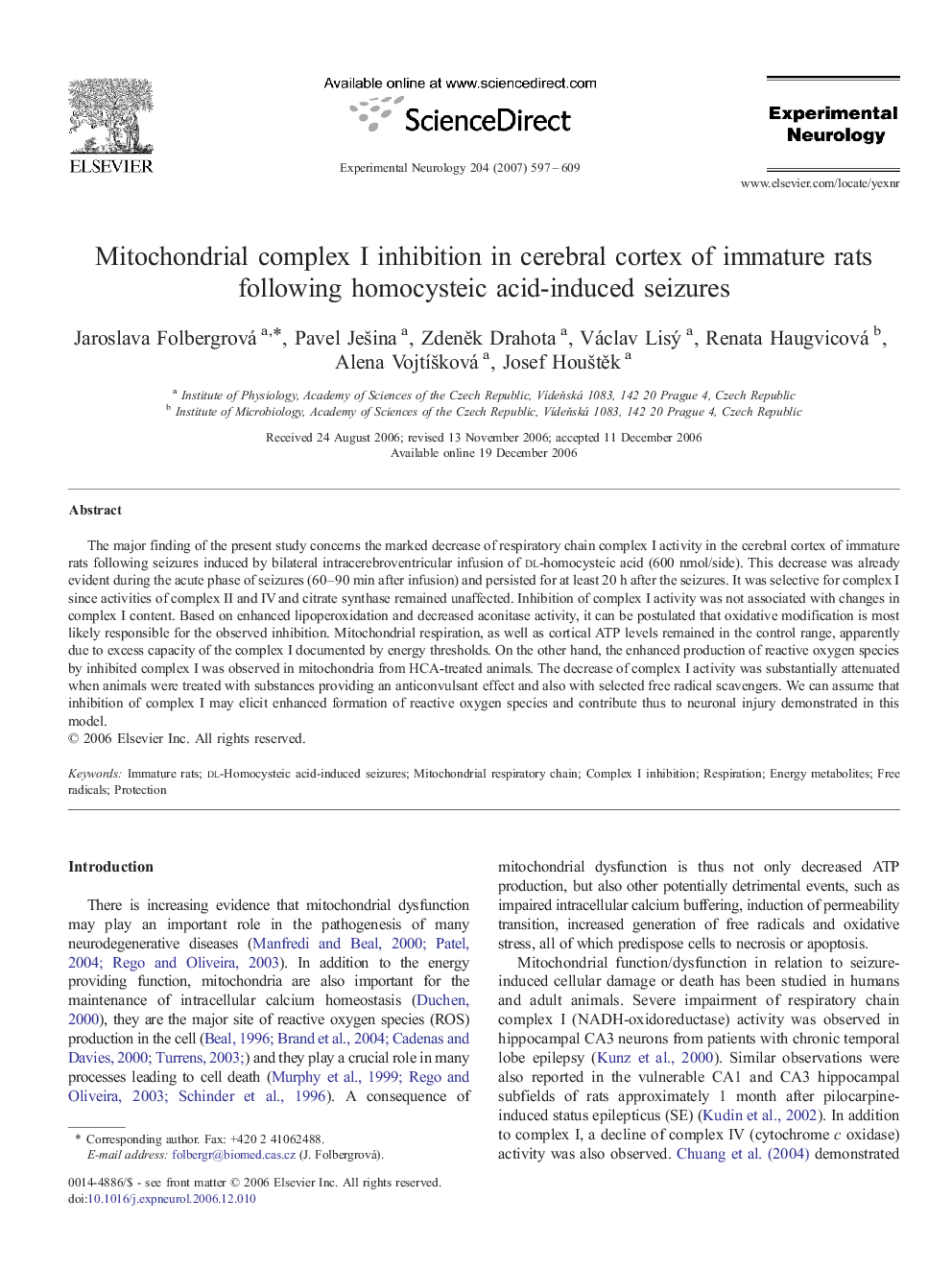| Article ID | Journal | Published Year | Pages | File Type |
|---|---|---|---|---|
| 3057219 | Experimental Neurology | 2007 | 13 Pages |
The major finding of the present study concerns the marked decrease of respiratory chain complex I activity in the cerebral cortex of immature rats following seizures induced by bilateral intracerebroventricular infusion of dl-homocysteic acid (600 nmol/side). This decrease was already evident during the acute phase of seizures (60–90 min after infusion) and persisted for at least 20 h after the seizures. It was selective for complex I since activities of complex II and IV and citrate synthase remained unaffected. Inhibition of complex I activity was not associated with changes in complex I content. Based on enhanced lipoperoxidation and decreased aconitase activity, it can be postulated that oxidative modification is most likely responsible for the observed inhibition. Mitochondrial respiration, as well as cortical ATP levels remained in the control range, apparently due to excess capacity of the complex I documented by energy thresholds. On the other hand, the enhanced production of reactive oxygen species by inhibited complex I was observed in mitochondria from HCA-treated animals. The decrease of complex I activity was substantially attenuated when animals were treated with substances providing an anticonvulsant effect and also with selected free radical scavengers. We can assume that inhibition of complex I may elicit enhanced formation of reactive oxygen species and contribute thus to neuronal injury demonstrated in this model.
